Harrowing Google Earth update reveals Ukraine before and after Russia’s attack
Satellite images capture aftermath of the siege of Mairupol
Your support helps us to tell the story
From reproductive rights to climate change to Big Tech, The Independent is on the ground when the story is developing. Whether it's investigating the financials of Elon Musk's pro-Trump PAC or producing our latest documentary, 'The A Word', which shines a light on the American women fighting for reproductive rights, we know how important it is to parse out the facts from the messaging.
At such a critical moment in US history, we need reporters on the ground. Your donation allows us to keep sending journalists to speak to both sides of the story.
The Independent is trusted by Americans across the entire political spectrum. And unlike many other quality news outlets, we choose not to lock Americans out of our reporting and analysis with paywalls. We believe quality journalism should be available to everyone, paid for by those who can afford it.
Your support makes all the difference.Google has updated it's aerial maps of Ukraine for the first time since the start of Russia's attack - with images now revealing the full scale of devastation.
The contrast is stark in Mariupol. The city of was a centre of industry, producing steel and other metals but since the February 2022 invasion has come under siege from Russian troops and is now occupied by Vladimir Putin’s forces.
Old Maruipol was disembowelled by its occupiers, with the UN estimating that 90 per cent of residential buildings were damaged or destroyed in the bombardment.
Here, The Independent looks at some of the most striking examples from Google Earth.
Mariupol Drama Theatre

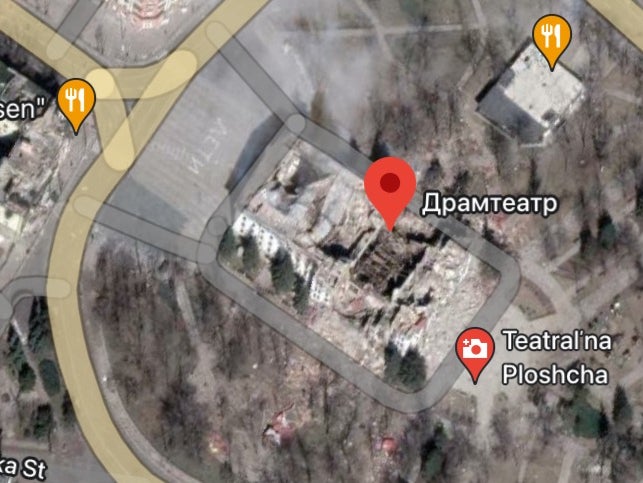
Fourteen months have passed since the war began, yet the Russian airstrike on the theatre being used as a bomb shelter in Mariupol last March stands out as the single deadliest known attack against civilians.
The Associated Press found evidence that the attack was far more fatal than estimated, killing closer to 600 people – almost double the current estimates.
By December, videos posted on both Ukrainian and Russian websites showed heavy equipment taking down much of the theatre, leaving just the front façade intact.
“The Mariupol Theatre no longer exists,” Ukrainian culture minister Oleksandr Tkachenko wrote on Facebook at the time. “The occupiers are removing traces of their crimes and couldn’t care less whether this is cultural heritage or whether it belongs to another culture.”
Google Maps captures the inside of the theatre, gutted by strikes, the roof having caved in.
Maternity Hospital

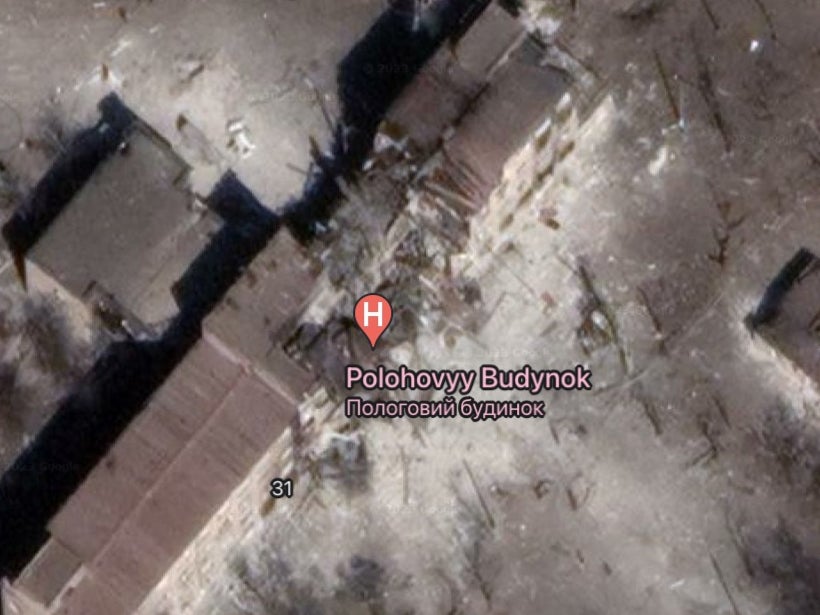
Just days before the theatre bombing, Russian forces launched a fierce attack on a maternity hospital in the beleagured city.
A wounded pregnant woman – immortalised in a photograph being transported from the hospital on a stretcher – died along with her baby.
Iryna Kalinina, 32, died half an hour after giving birth, according to The World Press Photo website. Her baby – named Miron after the word for “peace” – was stillborn.
Russian officials claimed at the time that the maternity hospital had been taken over by Ukrainian extremists to use as a base, and that no patients or medics were left inside.
The satellite capture of the hospital illustrates the scale of the devastation. A large section of the building is shown to have crumbled, leaving behind a snarl of ruptured beams and rubble.
‘Neptun’ swimming pool

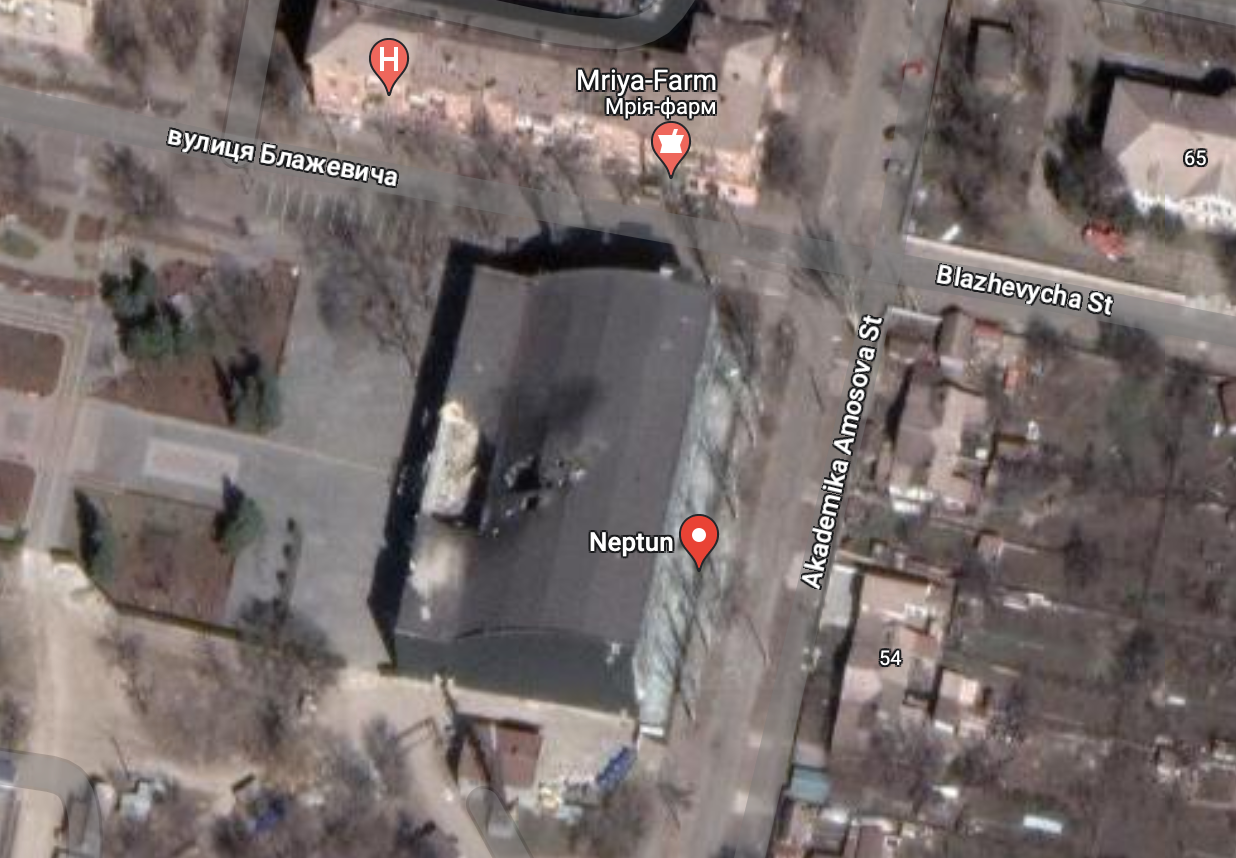
A public pool in Mariupol also fell foul to a vicious Russian stike, blowing a gaping hole in its roof, as shown on Google Maps.
According to the Kyiv Independent, civilians had been sheltering in the Neptune pool. Reports later emerged that children and pregnant women were trapped in the rubble.
The pool is located just 2.5 miles north from of the bombed-out theatre.
PortCity shopping centre

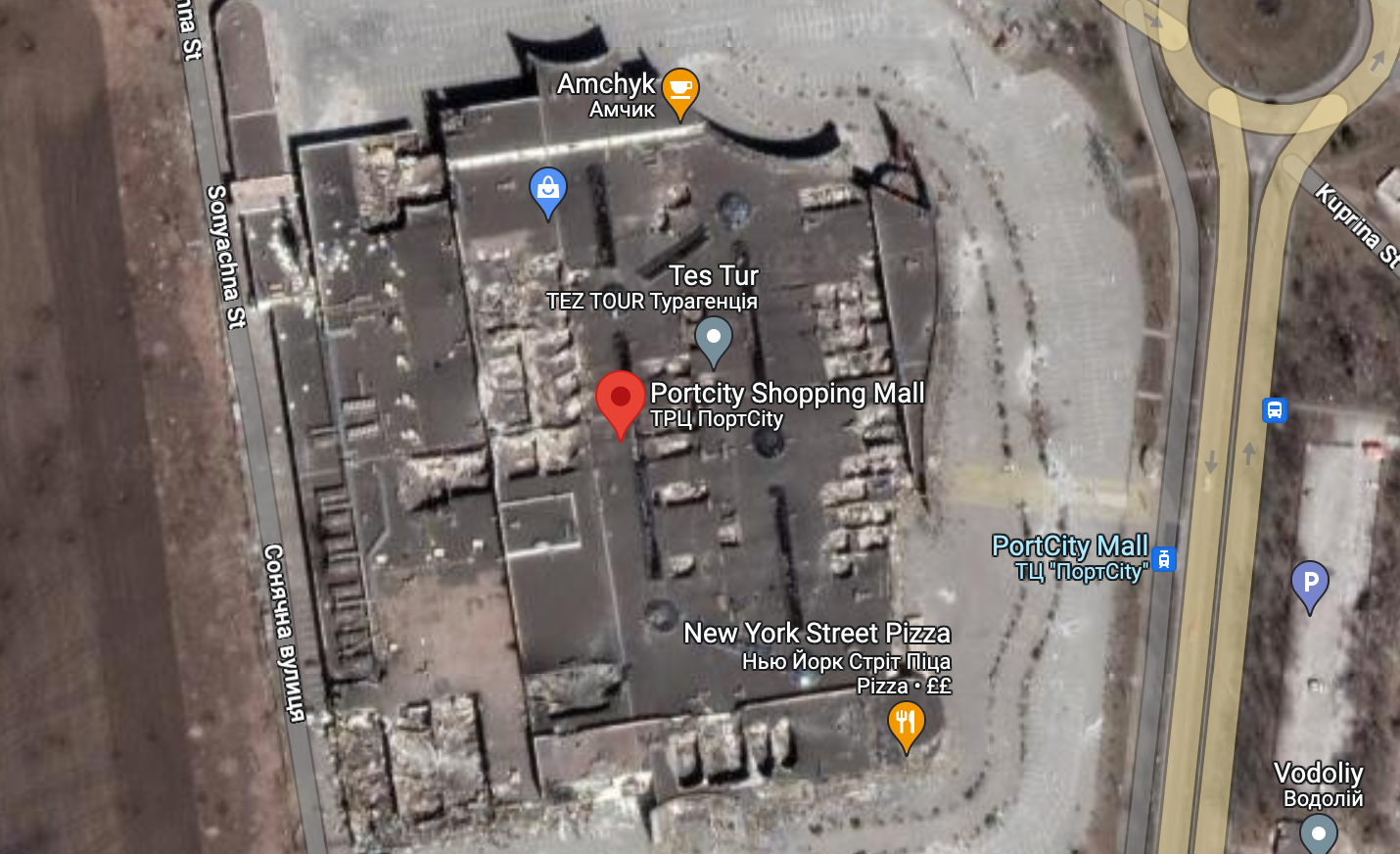
Google Maps satellite images capture the heavy damage done to Mariupol’s Portcity shopping mall.
Drone footage also captured the devastation to the store which, scorched by airstrikes, is now completely unrecognisable.
The European Council of Shopping Places named the store as one of seven of those most affected during the war, alongside Nikolsky and Karavan (Kharkiv), Retroville (Kyiv), and Fabrika (Kherson).
School of Arts

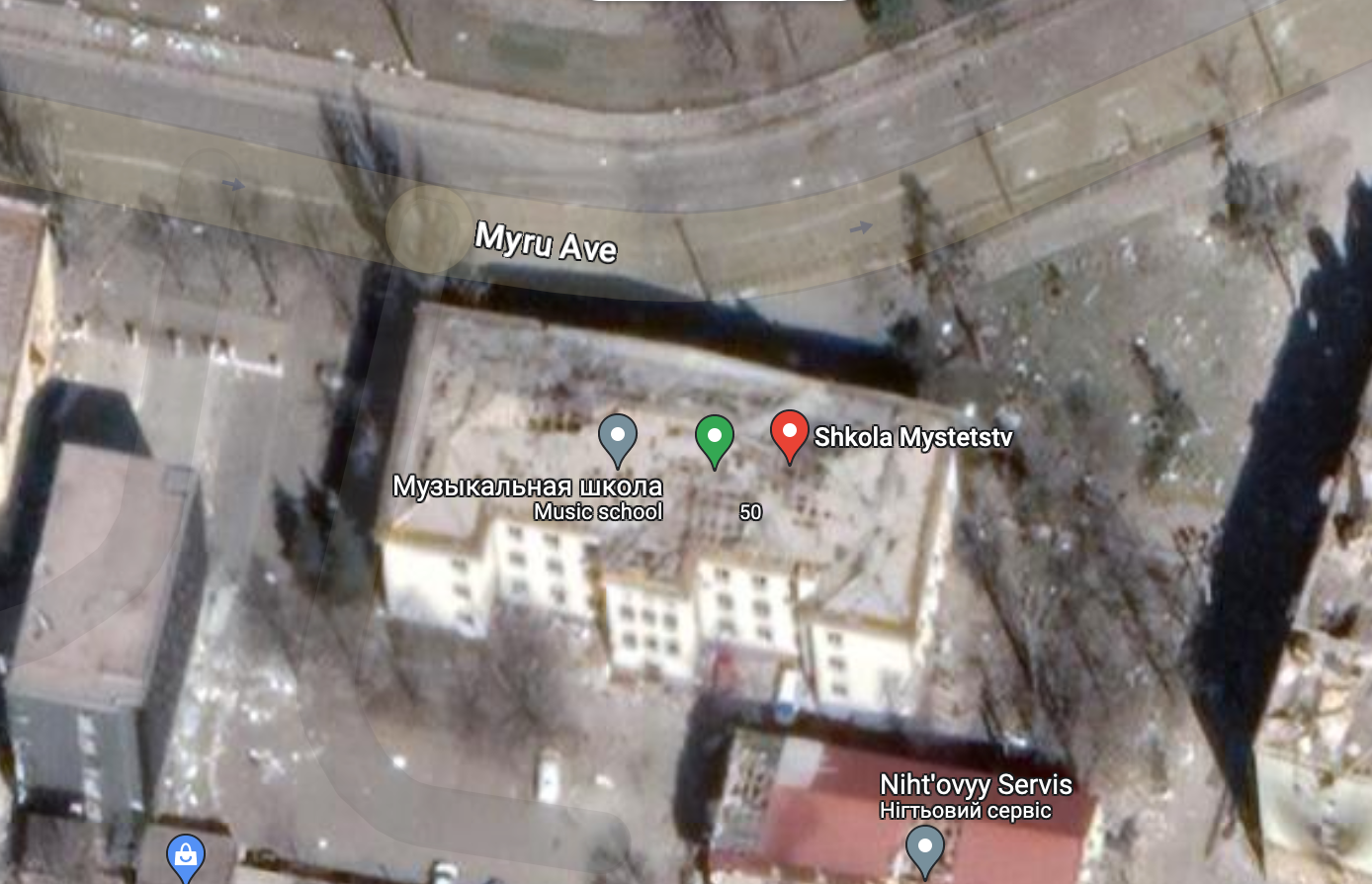
Ukraine’s authorities announced on 20 March last year that Russian troops had bombed an art school where about 400 people were sheltering.
The city’s administration said many of those sheltering in the school were women, children and elderly.
At the time, the council estimated that 130 people were rescued, but worried many more could remain under the debris.
Kuindzhi Art Museum

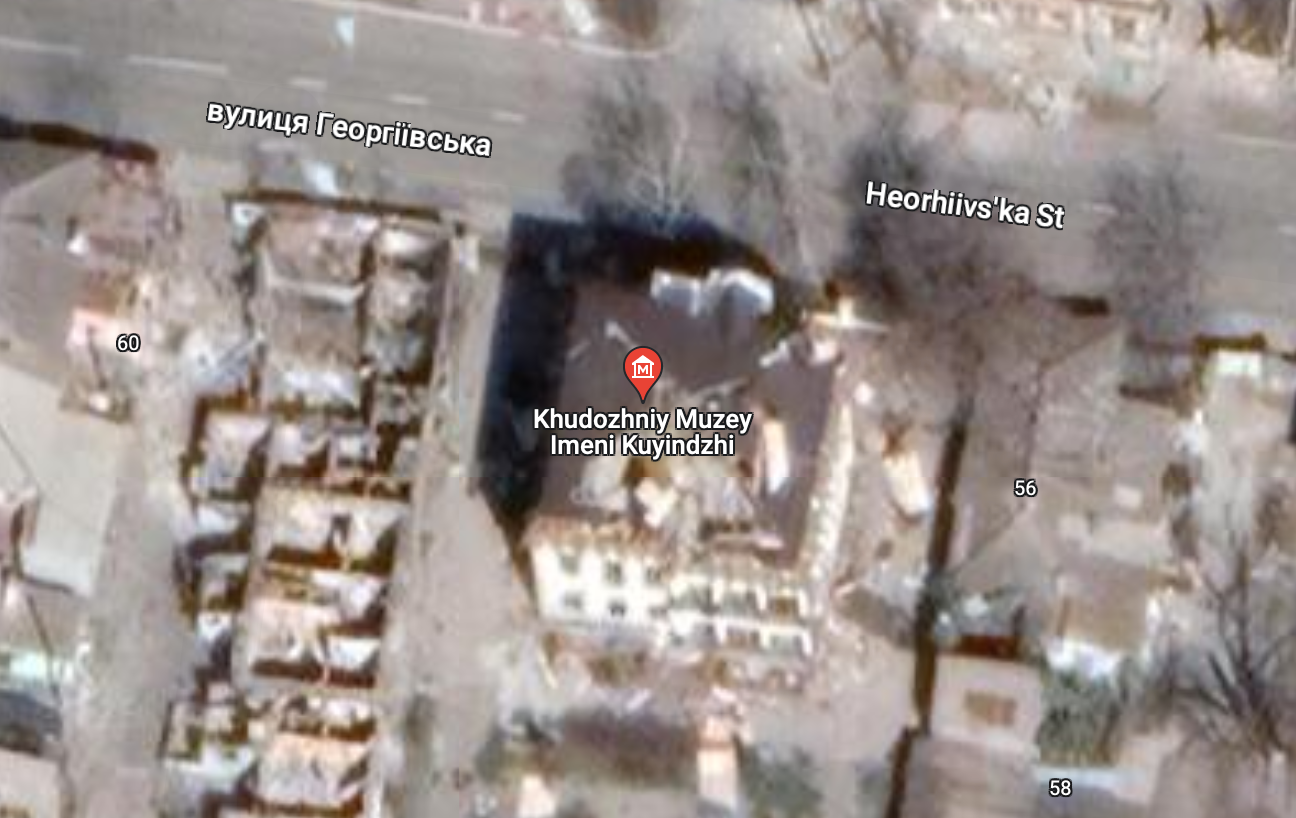
An art museum, dedicated to the life and works of 19th century artist Arkhip Kuindzhi, a former Mariupol resident, was destroyed by an airstrike on 21 March 2022.
According to the head of the National Union of Artists of Ukraine, the painter’s original work were not in the museum at the time of the shelling.

Join our commenting forum
Join thought-provoking conversations, follow other Independent readers and see their replies
Comments